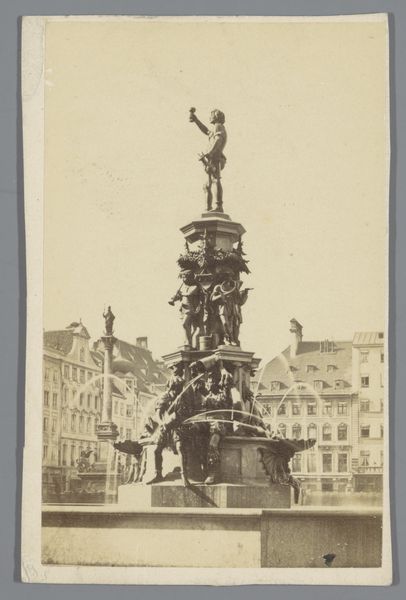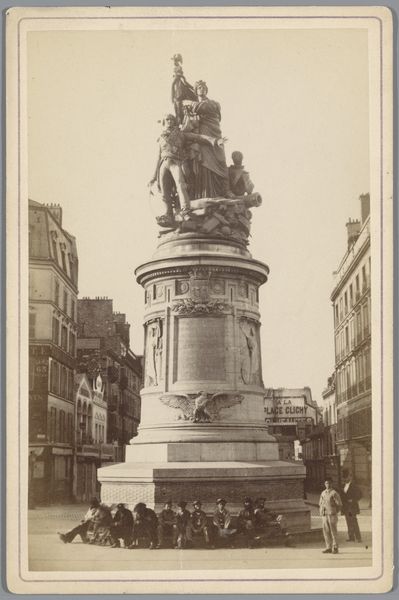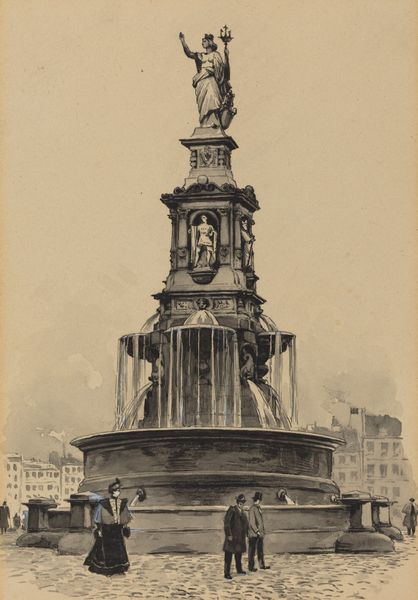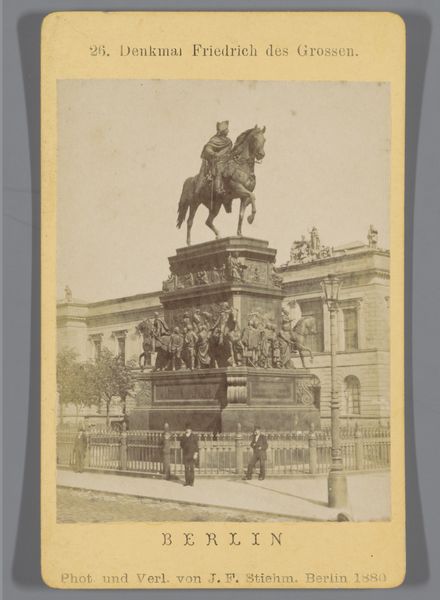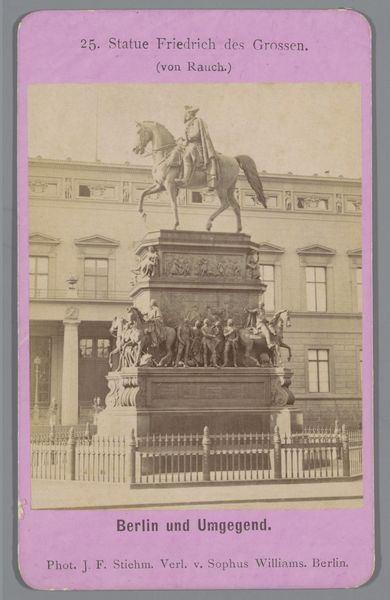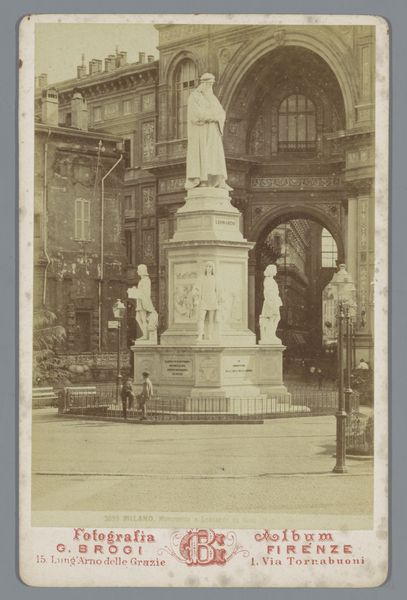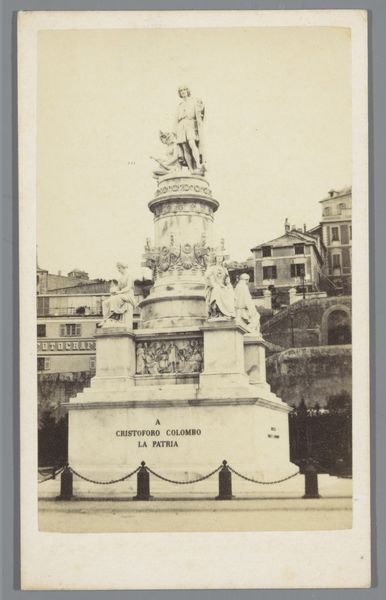
Dimensions: height 94 mm, width 63 mm
Copyright: Rijks Museum: Open Domain
Editor: So, here we have a photograph, a gelatin-silver print titled "Augustusbrunnen in Augsburg" and it's estimated to have been taken between 1855 and 1885 by Ferdinand Brauer. It has such a strong sense of place, a portrait of a specific moment in urban life. What do you see in this photograph? Curator: I see a dialogue between power and place. Look at the statue of Augustus, a figure from antiquity placed in the heart of Augsburg. The baroque fountain supporting him—spewing water, teeming with figures. What does that pose evoke for you, with his arm extended? Editor: Authority? Direction? Maybe a sense of ownership? Curator: Precisely! It is a deliberate claim, an assertion of Roman legacy over a Germanic city. Water, life-giving, also a symbol of cleansing, rebirth, but also power. The city uses Augustus, through his image, as a legitimizing force connecting them to ancient imperial authority. Do you think that is successful? Editor: It is an interesting visual strategy to connect past glory with present-day city life through monuments. It does feel…layered, historically speaking. Curator: The layers are precisely the point. This isn't just a fountain; it is a constructed narrative, frozen in bronze and water and captured in a photographic moment, linking Augsburg to the grand sweep of Western civilization. It’s all about how cities construct their identity, isn’t it? What do you take away? Editor: How even something as seemingly straightforward as a city fountain can be dense with historical and cultural meaning. It gives the mundane monumental weight.
Comments
No comments
Be the first to comment and join the conversation on the ultimate creative platform.
